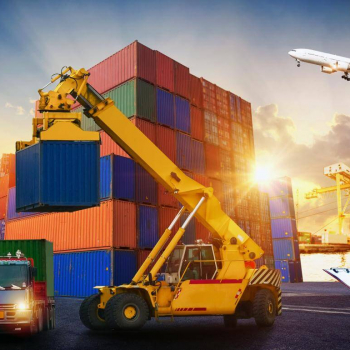The date of January 1, 2022 brings about a fundamental transition after Brexit as customs control will be established, which has been delayed until today.


With the spread of the pandemic due to the Covid-19 virus, the impact on the world of logistics and international transport was immediately perceived.
Faced with this, a collapse in the demand for spaces and services was expected.
What happened instead?
Contrary to expectations, the demand for international transport has increased thanks to a number of factors, including the change in purchasing approach (growth of e-commerce) and a high demand for processed consumer goods, most of the which products in Asia and then shipped by sea in container.
With the sharp reduction in available flights and the increase in restrictive measures defined by various governments, the demand for maritime transport has further increased. Companies have also played a fundamental role: many have tried to anticipate the interruption of the supply chain that could have resulted from new waves of pandemics, by purchasing supplies of raw materials in advance.
Transport capacity was below demand: prices started to rise, empty departures and delays made port management more difficult and a severe equipment shortage began to occur: empty containers were left where they were not. there was demand and the relocation was not planned.
Ports of congestion in the United States
Between late 2020 and early 2021, US West Coast ports began facing severe congestion problems.
The causes:
On the east coast, on the other hand, the same situation occurred due to the reduced number of flights, the consequent increase in demand for shipments by air, the shortage of manpower and infrastructure problems.
These factors are responsible for the congestion that has been created in all major American ports. Ships wait their turn to unload. The containers are buried in the terminals. Trucks wait hours (sometimes days) in line to load a container; at the same time they have to wait to unload the empty ones, which remain blocked waiting for a repositioning, thus increasing the lack of equipment.
Customers face severe shipping delays, impacting supply chains as barriers to both imports and exports.
Current situation
The incident in the Suez Canal, where over 300 ships were stranded for a week waiting to be able to continue the crossing, accentuated the problem of congestion in European ports, of empty departures and the lack of empty spaces.
As a result, the demand for air transport has also increased.
As far as maritime transport is concerned, the Middle East - Europe and transpacific routes are currently in a critical situation, determined by the lack of space, equipment, high number of requests and empty departures. The accumulated backlog forces companies to limit the acceptance of new bookings. Due to the high demand and the simultaneous scarcity of space, tariffs are constantly increasing.
On the Europe-North America route, carriers face problems related to equipment shortages, empty departures and delays due to congestion in American ports. As a result, the rates are constantly increasing and reservations must be made at least 5 weeks in advance.
As regards air transport, the export situation in Europe, Asia and America remains delicate due to the high demand; as well as in Asia where such a high peak was only reached in May 2020 . In Europe and America, the space for direct flights to India and Bangladesh is very limited, due to shipments of first aid items in the countries most affected by Covid.
What to expect
For the next few months, the reduced availability of space will continue to affect all types of transport.
On the one hand, the shortage of containers is expected to persist until 2022, not having enough vacuums to handle the demand for goods. Furthermore, the Suez accident and the situation in India add to an already extreme scenario. Manufacturers are expected not to be able to ramp up their container production fast enough to reduce the space shortage problem, so there will be high demand in conjunction with low availability. The expected consequences are an increase in fares, already high, instead pushing towards the use of an air service, which will however suffer from poor space capacity until the restrictions imposed by the pandemic allow passengers to travel without restrictive measures.
As for the United States, forecasts indicate an increase in import requests in the coming months. This will have an impact on the already difficult situation of port congestion.